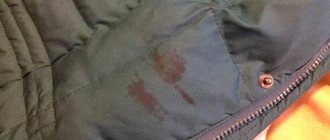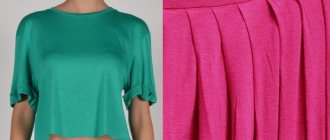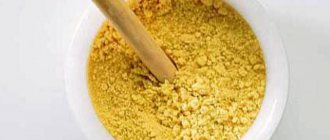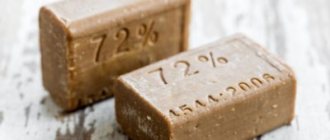A blanket is an integral part of every bedroom. It will keep you from freezing on a cold autumn morning or a cool summer night. They can hide by the fireplace, gently rocking in a chair and drinking hot tea. Also, cover the bed with a bright blanket, using it instead of a regular bedspread.
With intensive use, textiles become seriously contaminated. In this case, there is a need for effective cleaning. How to wash a blanket in a washing machine? How to handle thin fabric, and what products are best to use? Let's figure this out together.
Which blankets are machine washable and which are not?
You can wash a blanket in an automatic machine only if it is made from the following textiles:
- fleece;
- woolen;
- cotton;
- fur;
- cashmere;
- synthetic.
Before washing, it is important to determine the size of the item. A large blanket will take up all the space in the machine, preventing the drum from spinning and overloading the engine. Wet material will increase in volume and gain significant weight. Any machine has its own permissible weight limits, so it is necessary to weigh things before cleaning so as not to break expensive equipment.
It is worth paying special attention to placing the blanket in the drum so that it stretches well and does not deteriorate. This problem can be solved by carefully rolling the blanket into a roll and distributing it throughout the inner space of the drum.
Preliminary preparation
Before putting a woolen or any other blanket into the washing machine, you need to carry out preliminary preparation. It is as follows:
- Remove dust from the plush product. To do this, you can simply shake it or knock it out. It is advisable to do this in the fresh air. If this is not possible, you can vacuum the item.
- It is not recommended to soak it in the machine before washing. Then the product will become very heavy and loading it into the drum will be much more difficult. Soaking is important for hand washing.
- Remove large debris. This is especially true in homes where there are pets. Their fur constantly sticks to the fibers of the bedspread. You need to get rid of it before loading the item into the drum. Clean using a special adhesive roller or brush.
- Work with complex contaminants. It is better to wash old stains separately so that you do not have to re-wash. It is enough to thoroughly soap the contaminated areas with laundry soap and leave for 15 minutes. After this, you can start machine washing.
Let's look at how to properly wash natural and synthetic materials in an automatic washing machine.
Washing modes for blankets made from natural fabrics
Wool requires careful handling. Therefore, when washing, it is important to follow all the tips, otherwise the fabric will shrink and the blanket dear to your heart will cease to be attractive. First of all, pay attention to the dimensions. The load of the washing machine should be from 4 kg, no less. A machine with a small volume may be damaged by such a load.
Pay attention to the tag of the wool product, on it the manufacturer may indicate the preferred washing method.
Carefully choose a specialized composition for cleaning wool. You should not wash with standard powder; there is a wide selection of special gels. They will allow your item to maintain its original appearance and not change color.
If there is a “delicate” program in the machine, you must use it. Water temperature - no higher than 35℃ . It is better to wring out the blanket by hand; if possible, do not use a machine wring. A clean product can be left to dry, for example, on a smooth floor or secured on a strong cord on the balcony.
The most undemanding fabrics to process are cotton and polyester. They can be thrown into the drum with any wardrobe items. The blanket washing mode can be absolutely any, and the spin speed too. For cotton fabric, water of any temperature is suitable (when choosing, rely on the degree of contamination - the dirtier the blanket, the higher the temperature).
What should the water temperature be when washing the product?
Blankets should not be washed in very hot water. The optimal temperature is from 30 to 40º. The exact numbers for a particular item depend on the fabric and its properties. The more tender it is, the cooler the temperature should be.
Cotton, polyester, micromodal and other synthetics can withstand 40º, but wool and silk are washed only at 30º with great care. If the fabric of the blanket is mixed, it is washed at a low temperature, taking into account the properties of the fibers included in the composition.
Failure to comply with the temperature conditions can lead to deformation and shrinkage of the product. If it is heavily soiled, cold water will not work - stains may remain on the blanket. It is better to choose another removal method.
Keep in mind! Some sources indicate a permissible temperature of 60º, but it is better not to wash in water hotter than 40º.
Automatic machine programs for blankets made of artificial materials
Fleece
Fleece material is washable. When laying the blanket, you must also roll it up and spread it over the entire drum. When washing, select the gentle cycle.
The water temperature is from 20℃ to 30℃, otherwise the textiles will deteriorate forever. It is not recommended to wring out or dry the fabric in the washing machine. This blanket can be washed with a special liquid for fleece, without the use of fresheners or conditioners. These products can damage the fibers of the material.
A fleece blanket can be dried exclusively naturally. It can be laid out on a flat floor in a room with good air circulation or dried on the balcony. Do not hang it on radiators under any circumstances - fleece cannot withstand prolonged heating.
Synthetics
Synthetic materials are easy to wash - both by hand and in a machine. The fabric may be different, so information about temperature conditions should be found on the manufacturer's label. Traditionally it varies from 30℃ to 60℃. If the washing machine does not have a special program for synthetics, then it is better to use the “gentle” mode.
You can wash synthetics with both powders and all kinds of gels suitable for the type of fabric. This will allow the blanket to remain bright and soft for a long time. For heavy soiling, use stain removers.
You can dry and spin in an automatic machine, but you will have to dry it “naturally”. Do not use heating equipment; this can cause irreparable damage to the fabric. It is not recommended to hang it in direct sunlight, otherwise the product will lose color.
Microfiber
A plush microfiber blanket requires special treatment, as it is a very delicate material. But it is also allowed to be washed in a machine, separately from other things. Choose your detergent carefully - it must be suitable for the type of fabric.
Stick to temperatures up to 40℃. It is worth washing only on a delicate cycle without spinning. You need to dry it “naturally”, away from direct sunlight.
Basics of proper blanket care
Properly caring for bedspreads means following some rules and restrictions, which we will discuss below.
You shouldn’t clean things too often - such exposure can further deform them. It will be enough to do the procedure once a month. You can do this in three ways:
- manually;
- in the typewriter;
- using dry cleaning.
Having a washing machine at home, washing large items will not be difficult. You can safely refuse chemical treatment and wash them at home. The main thing is to take into account the fabric material, the manufacturer’s recommendations and be attentive to other points, which we will discuss below.
Immediately before the procedure, you should understand the composition of the item. You can wash it in an automatic machine if it is made of the following material:
- fleece;
- cashmere;
- synthetic fabric.
Information about the composition is contained on the product label.
Consider the capacity of your equipment.
The washing machine must have a load of at least 4.5 kg. Otherwise, the final result may not satisfy you.
You can load small blankets by folding them in four or simply crumpling them. It is better to roll large ones and place them carefully throughout the drum.
The label also contains other useful recommendations: at what temperature and in what program to wash, whether it is possible to use a spin cycle, and so on.
As for washing powder, it is preferable to use products with a gel consistency.
The gel concentrate foams less, dissolves better and is washed out faster.
It is also recommended to add conditioner, which will make things soft and fluffy. For colored items, use a product without bleach.
Product care is not limited to just cleaning them. It also implies proper drying, as well as proper storage.
Drying also depends on the material. We'll talk about this a little later. It is better to store it rolled up. This will prevent creases and bends from occurring.
The item should not be placed in a bag. This will prevent its ventilation. It’s better to put a bag of lavender next to it.
Blanket washing products
Preference should be given to the liquid composition, because it produces less foam and penetrates faster into the fibers of the fabric. If the blanket is brightly colored, you should not purchase products that contain bleach.
Liquid special compositions retain colors well and protect the washing machine drum from scale. Such compositions are intended for washing in hard water. This gives the textile additional softness and elasticity.
The products also contain components for restoring damaged microfibers of the material. The rough fibers are straightened and the fabric becomes soft to the touch. When choosing a liquid product, you should pay attention to the temperature conditions at which it is used.
How to wash in a washing machine?
If you do not want the blanket to roll up after washing, select program parameters that are suitable for this type of material. What matters is the temperature of the water, the permissibility of soaking, the mode itself, the number of revolutions during the spin cycle, and drying methods (manual, machine).
Most types of blankets can be washed in a washing machine, usually on the delicate or hand wash cycle. However, if you have a product made of natural wool (80% or more in composition), only dry cleaning (with a damp sponge) or dry cleaning is recommended.
If you are going to wash a large fluffy blanket in an automatic washing machine, be sure to make sure that the volume of the drum of your home assistant will be sufficient. Relate it to the wet weight of the product. For example, if you wet a fleece blanket, it will not be very heavy and can easily be washed in a 5 kg machine (standard double size). But it’s unlikely to be possible to wash a blanket of the same size in it, but with long pile. The washing device simply will not be able to rinse it properly, and the program will eventually generate an error.
In this case, check out this little life hack! Before placing the product in the drum of the washing machine, carefully roll it into a roll along its width. Place the resulting roll along the walls of the drum in a circle, like a bagel. Now you can start washing. Textiles placed in this way will not bunch up and will not disrupt the balancing system of the washing machine. It may not wash the item as efficiently as it would if the maximum load weight was observed, but at least it will be able to rinse and wring it out. Be sure to read what delicate washing is.
So, let's start washing the plush blanket in the washing machine:
- Prepare the item for washing, following the recommendations from the section above;
- Roll the product as needed;
- Pour liquid detergent and rinse aid into the compartment (it will make it easier to fluff up the blanket after washing). It is not recommended to use powder in granules - the grains may get stuck in the pile without completely dissolving;
- If you cannot decide at what mode and temperature to wash your blanket, follow the following instructions:
- Wool (subject to machine washability) – 30 degrees, “Wool” mode;
- Acrylic – 30°, “Synthetic” mode;
- Plush and microfiber – up to 40°, “Delicate wash”;
- Cotton and bamboo – up to 40°, “Delicate mode”. Cotton products may shrink slightly, and bamboo does not tolerate aggressive mechanical stress;
- Polyester, polyamide – up to 60°, “Synthetic” mode, it is advisable to use a rinse aid with an antistatic agent.
- The spin cycle must be performed at minimum speed of the washing machine;
- You need to dry the item flat out in a dry room away from heating devices and direct sunlight. The best option is to throw it over several dryer bars so that air can circulate freely between the hanging floors.
Bamboo blanket
Recently, bamboo or a mixture of bamboo and cotton, which is used to make pillows, blankets and rugs, and towels, has been gaining popularity. This is a natural, environmentally friendly and affordable material that does not require complex care and does not provoke allergic reactions. Textiles that are soft to the touch create comfort and warmth. And the aesthetic appearance of the product will decorate every interior.
Due to its porous structure, bamboo blanket allows air to pass through and breathe. The material does not cause allergies, has a beneficial effect on the condition of the skin, and provides a gentle and comfortable touch. It does not wrinkle or stick to the body, but it takes a long time to dry.
Natural bamboo product has natural antibacterial properties and destroys up to 70% of bacteria on the surface. In addition, it is resistant to mold. Therefore, the fabric remains hygienic and clean longer. Due to the listed properties, bamboo will be a suitable solution for making pillows and blankets, bath and beach towels, bedspreads and blankets.
Bamboo fabric can be washed in a washing machine on a delicate cycle up to thirty degrees. To do this, it is recommended to choose liquid powder, shampoo or gel, or a special eco-friendly product. Do not use bleach!
Lay out the washed fabric horizontally. The fabric stretches well, so it is not advisable to hang the blanket, otherwise it will lose its shape. A bamboo blanket can be ironed when the iron is heated to 110 degrees. Store bamboo products open. Do not put items in plastic bags!
Wool and cashmere products
Cashmere blanket is soft, fluffy and silky, but very difficult to care for
It is better to wash bedspreads and blankets made of wool by hand.
Practice shows that you can wash such bedspreads in a washing machine, but this is not always safe, even if you follow all the recommendations, sometimes it is impossible to achieve the desired result, you may even ruin the item, so it is better to contact professional cleaners and dry cleaners. Of course, if this is not possible, then proceed to hand washing or machine washing.
- Select the “wool”, “manual”, “delicate” mode on the machine.
- Squeeze at a minimum speed of 400 rpm or stop squeezing.
- Choose only liquid powders, soaps, preferably special products for cashmere and wool.
For any washing method, it is better to use a liquid detergent for delicate fabrics. - Do not expose to high temperatures, no more than 30 degrees.
If you refuse to spin, let the liquid drain naturally, away from heat. Do not hang woolen items. They will become deformed or sag and decrease in size.
Hand washing wool products
- Fill a container with a large amount of water, no more than 35 degrees.
- Dissolve the detergent evenly.
- Immerse the blanket and soak for a couple of hours.
- Wash with light movements and rinse several times.
- Squeeze it lightly with your hands and place it on a horizontal surface as flat as possible.
We can remove dirt from wool or cashmere in another way - dry cleaning
Selecting the correct temperature for the washing mode
It is not enough to choose the right program for the fabric and type of product; you also need to understand which temperature regime is most optimal for a particular situation:
- cotton – temperature 90-95 degrees, spin set to maximum speed;
- manual mode - delicate expensive fabric is processed, cleaning occurs at a slow pace, and spinning at low speeds (temperature 30-40 degrees, the icon on the clothes is a hand lowered into the basin);
- fast - ideal cold treatment option for small stains, refreshing laundry (working time - 30 minutes, maximum speed is automatically turned on during spinning);
- delicate - similar to the manual mode, but spins, you can wash “capricious” fabrics, sneakers, sneakers, a down jacket, a wadded blanket;
- intensive - the water is heated to 60-95 degrees and intensive washing of heavily dirty items is carried out;
- wool - involves careful washing of woolen items that have the ability to shrink and lose their appearance if treated incorrectly (water heating is minimal - 30-40 degrees, no spin);
- normal (everyday) - the best option for washing clothes that are not very dirty, suitable for daily use (cycle duration does not exceed 1 hour, temperature 30 degrees);
- eco - program for economical consumption of water and electricity while maintaining the quality of washing at 30 degrees;
- synthetics - allows you to tidy up synthetic products, it is better to stop the choice at 60 degrees, maximum spin;
- for children - it is supposed to clean heavily soiled items (water is heated to 60-90 degrees, double rinse cycle).
Washing modes and temperatures in different washing machines may differ in names and set of functions. The work can be affected by loading - horizontal or vertical type. For each type of model, a mandatory set of programs is provided.
At what temperature should you wash a blanket in a machine?
The washing temperature directly depends on the material from which the blanket is made and in most cases it will be correct to follow the recommendations on the label. What to do if for some reason the label is missing or it is not possible to make out what is written on it:
- Fur, wool and cashmere products are the most sensitive; the temperature for them should not exceed 30˚. It is not recommended to wash such things in a machine, but if you really need to, you can take a risk.
- When washing bedspreads made of dense natural materials, such as linen or cotton, a temperature of 30˚-40˚ is allowed. You should not exceed it, because there is a possibility of the product decreasing in size.
- Microfiber bedspreads can be washed at temperatures up to 40˚-60˚. But you shouldn’t set the maximum value unless the label confirms it.
- Faux fur or plush items can be cleaned at temperatures not exceeding 40˚ unless the label says otherwise. If it is absent, it is better not to risk it and wash at thirty degrees.
- In the vast majority of cases, synthetic plaid can withstand temperatures up to 40˚ and can be washed just as well in a washing machine as by hand.
- The same cannot be said about terry products, for which treatment with high temperatures is undesirable and the optimal value for them would be a value not exceeding 30˚.
The best means
In order for the product to wash well, you need to use the right detergent. The only recommendation is to choose a liquid powder or gel.
This form of release is good because the composition dissolves quickly, copes better with dirt, is activated in cool water and rinses well.
Bulk powders are not prohibited from use, but in this case you will have to rinse the item at least 2-3 times.
Most liquid concentrates are universal, that is, they are suitable for caring for ordinary and delicate fabrics, including natural wool and silk.
You definitely need to pay attention to the composition. It should not contain aggressive components such as chlorine bleach or acids
When washing duvets, it is recommended to use detergents containing lanolin. They prevent the formation of lumps, so the filler does not get lost.
Top 3
The range of liquid detergents is varied. When choosing, you need to focus on their price and features of use:
- Washing gel “Weasel wool and silk”. This product is suitable for caring for blankets made of synthetic and natural fibers. It starts working at a temperature of 30 degrees. The harder the water, the greater the consumption of detergent. For 1 liter of gel you will need to pay about 250 rubles.
- Universal washing gel “Synergetic”. The concentrate can be used to care for any products: cotton, synthetics, silk and natural wool. It is suitable for hand and machine washing, does not contain aggressive components, is dosed sparingly, and is used to care for children's bedding. The cost of 1 liter of gel is about 210 rubles.
- Persil freshness washing gel from Vernel. It contains a stain remover, so it is suitable for washing light and white fabrics. The cost of a 1.95 liter package is about 450 rubles.
Do not exceed the dosage of detergent. This will not improve the quality of washing, but will only make it more difficult to rinse foam from fabrics.
Types of blankets
Acrylic is a soft and lightweight synthetic fabric, similar in properties to natural wool. It retains heat and its original physical properties for a long time, does not require special care and does not cause allergies, and does not electrify. Acrylic can be easily washed in a washing machine, but it does not allow air to pass through and absorbs odors. In addition, pellets form on the material, and greasy stains on the product are difficult to wash off.
Microfiber is a modern synthetic material made from a mixture of polyester and polyamide. This is a durable and wear-resistant fabric that is easy to wash by hand and in a washing machine. It dries quickly, and no pellets form on the surface of the canvas. This is a very warm material that can replace a standard blanket. However, microfiber is electrified. In addition, products should not be ironed or dried at high temperatures.
Polyester is the most common type of synthetic fabric. It does not absorb odors, is pleasant to the touch, is durable and light weight, and has a low price. Polyester can be washed, it dries quickly and does not wrinkle, but it electrifies and shrinks at high temperatures.
Faux fur is a primed fabric with synthetic pile attached on top. It warms well and retains heat for a long time, is resistant to moisture and wear, and is easy to clean. Among the disadvantages, we note that faux fur is electrified and attracts dust. The products can be easily cleaned with a vacuum cleaner.
Fleece is a non-woven soft fleecy material of synthetic origin, which is obtained from polyester. It retains color for a long time and does not fade, does not wrinkle, and is not affected by moths, fungus or mold. Fleece can be washed and ironed. It does not cause an allergic reaction and is lightweight, but requires careful care
Cotton is a natural and environmentally friendly material with light weight. This is a soft and pleasant fabric that does not cause an allergic reaction. It allows air to pass through and breathe, absorbs moisture, which makes the blanket even more comfortable. This is a universal option that keeps you warm in winter and cool in summer. Cotton can be washed at 60-90 degrees, which allows you to remove germs, fat and dead skin or hair that remain on the blanket after use. It does not electrify and dries in a short time. In addition, the material can be ironed at high temperatures. It can withstand repeated washing, but wrinkles quickly and takes a long time to dry.
Bamboo is a modern natural and eco-friendly material with breathable properties. Bamboo material has an attractive appearance and shine, and does not provoke an allergic reaction. The fabric does not wrinkle, is easy to wash and iron, but takes a long time to dry. It is light and comfortable. This material is used to make beach and bath towels, blankets and pillows, blankets and bedspreads. A mixture of cotton and bamboo is also very popular.
Wool is a natural and eco-friendly material with healing properties. It stimulates blood circulation and has a beneficial effect on the musculoskeletal system, helps with colds and various diseases. Wool absorbs moisture but remains dry. It maintains cleanliness and freshness for a long time, warms well and protects from the cold, maintains a comfortable temperature without sweating. The material has a long service life and can last longer than ten years. However, some models are prickly. In addition, natural material can cause an allergic reaction.
Cotton
Cotton and cotton bedspreads can be machine washed using any powder and rinse aid. The maximum permissible temperature is 60 degrees. Hand washing is no different.
Cotton items are machine washable at 40-60 degrees
Principles of cleaning
Before sending a blanket or blanket for washing, carefully inspect the product. It is recommended to immediately remove major contaminants:
- A sticky roller will help get rid of cat hair and the hair of other animals;
- A solvent will help remove nail polish that accidentally gets on the bedspread, but first test its effect on an inconspicuous area of the material. You won't be able to remove the varnish with detergents. If the fabric cannot withstand the solvent, take the item to the dry cleaner.
- Before machine washing, remove food stains with a stain remover or hand wash the affected areas. If the stain is definitely not of protein origin, hot steam will help get rid of it.
If you don’t know how to clean a blanket or bedspread and are afraid of ruining it, you should turn to dry cleaning services. A voluminous blanket or large bedspread that does not fit into a home washing machine can be taken to the laundry room, where there are automatic machines with capacious drums.
Hand wash cotton
Despite the presence of an automatic washing machine, sometimes you have to resort to hand washing. It is recommended for:
- cotton fabrics with complex texture;
- delicate clothes made from the finest cotton;
- products with rhinestones, beads, hand embroidery and other similar decor.
It is recommended to wash them in warm water, the temperature of which does not exceed 40 degrees and, preferably, without pre-soaking.
Preparing for washing
You need to start preparing by sorting white and colored items. Additionally, we sort heavily and lightly contaminated products. Some of them will need soaking to restore their freshness and purity. We put them separately. Further:
- We turn out clothes and home textiles;
- we take out everything that is left in our pockets;
- fasten all the fasteners.
Now all that remains is to familiarize yourself with the care requirements indicated on the label. For some items, dry cleaning only is recommended.
How to wash things correctly?
It is recommended to wash natural cotton by hand without pre-soaking it. It is better for him to prefer laundry soap, which is effective even with severe dirt.
Having chosen a suitable product that does not contain chlorine and other active substances, we make a soap solution, the temperature of which should not exceed 50 degrees. Delicate clothes made from natural cotton should be washed without excessive effort so as not to stretch the thin fabric. The items are wrung out without twisting and rinsed in warm water until the soap suds are completely washed off.
How to dry things correctly?
It is not recommended to dry cotton items in the open sun. Hanging them on clotheslines due to their ability to stretch is not allowed. Upon completion of washing, clothes made from cotton fabrics are laid out horizontally until completely dry. Iron it under-dried at maximum temperature. It is allowed to use the steaming mode.
Can it be processed by machine or by hand?
Hand wash applies to quilted and full-woven sheep's wool items. This method of processing is the most gentle, so it will not harm the products.
However, hand-washing a massive blanket, which increases its weight 5 times after contact with water, is quite difficult. Therefore, a completely reasonable question arises about whether machine washing is permissible.
To answer this, you need to understand exactly what technology was used to make the blanket. Depending on this, the method of caring for the product will differ.
Quilted
With this sewing method, the wool base is placed in a fabric cover and stitched around the perimeter and in the center. This reliable method of fixation helps prevent the filler from clumping into a lump and prevents it from moving in one direction or another.
This sheepskin quilt is machine washable without worry. It will not deform and will not lose its original shape.
Whole woven
A full woven blanket can only be washed by hand. It is a homogeneous fabric made from sheep wool.
Before you start caring for the product, you need to read the information on the label.
The composition of the bedding is of fundamental importance. If it is pure wool, without the addition of synthetic fibers, then the product cannot be loaded into the washing machine.
Fur
When making fur products, pile is woven into a solid woven base. This gives the blanket a soft feel. It looks very attractive. However, such items cannot be washed either by hand or by machine.
They can only be cleaned dry. If you cannot cope with the task on your own, you can contact a dry cleaner.
How to wash merino wool items
Various products are made from it - small and voluminous, long and short. The care process also depends on this, so we’ll tell you about the most popular items made from merino wool: how to wash it correctly.
Thermal underwear
How to wash merino wool thermal underwear:
- At t 35°.
- Better with your hands. If you want to machine wash, skip the spin and dry cycle.
You can iron thermal underwear, but set the iron to the minimum temperature. All other recommendations are the same. Do not forget to place slightly damp gauze or thin cloth between the iron and the item.
We have men's and women's thermal underwear, single-layer and double-layer (merino wool and coffee fibers). You can purchase a set or separately a sweatshirt with long johns and leggings. We sell environmentally friendly materials and constantly update our range.
Sweater
How to wash a merino wool sweater:
- Manually.
- At t 30°.
- In soft water. Pre-boiling helps soften it. Don't forget to cool the water to the desired temperature.
If it is not possible to wash the sweater by hand, you can use a machine, but place the item in a special bag. Select the correct mode, but without spinning and drying. The rest of the advice is the same.
If possible, take your clothes to a dry cleaner, where they can dry clean the item.
Plaid
The preferred cleaning method is dry cleaning.
How to wash a merino blanket at home:
- Hands in plenty of water.
- At t 38°.
- Okay, but wash the item carefully so that the detergent and water act on the entire thickness of the fibers.
Bobbin merino
Bobbin yarn can withstand load better and is not deformed when knitted by machine. But such material requires a special approach when washing, because it can be impregnated with special compounds to give the thread special mechanical properties.
When knitting with such yarn, measure the sample before and after bath and laundry procedures.
Tips on how to wash bobbin merino:
- Before washing, steam the product to remove the wax from the yarn.
- Wash at 30°.
- Do not twist, there should be no friction.
- You can soak for 5 minutes, periodically squeezing the knitting sample with your hands.
- Dry according to the general rules for merino.
- A sample or a product knitted from new bobbin yarn can be washed twice for the first time.
After washing, bobbin merino will fluff up, increase in size, and remove wax and other substances. Samples should be washed in the same way as finished products.
Merino with acrylic
Other fibers are rarely added to merino wool, not to improve quality (merino quality is impeccable), but to reduce cost. Acrylic is a polymer fiber. Even the addition of 20% acrylic significantly reduces the cost of the yarn produced, and therefore the finished product, and also makes it less difficult to care for.
When washing merino with acrylic, the temperature should also be 30-40°. You can soak the item for 10 minutes. The recommendations for the process of washing, drying and ironing are the same, but you can wash a merino product with acrylic more often and it will keep its shape longer and better. Much depends on how much acrylic is in the composition.
How to dry a blanket after washing
It is not recommended to dry blankets vertically, especially while water is draining. They are dried in a horizontal position outdoors in dry weather, without contact with direct sun. This is done to avoid product deformation. This applies to both natural fabrics and synthetics. For example, fleece wrinkles easily, so when drying on a line, a crease may appear at the fold.
It is better to keep the drying blanket away from radiators and heaters and let it dry on its own.
Rules for performing the procedure
There are several options for washing a jacket. It is best to wash your jacket in a vertical position. This allows you to thoroughly clean the outer surface of the jacket, minimizing the penetration of detergent into the inside of the product.
It is also not advisable to use conditioners, which, like washing powders, can lead to white stains on the fabric.
Regular with soaking
To wash a bulky, heavily soiled down jacket, you will need a large basin or bath.
Fill the prepared container with water at a temperature of no more than 40ºС, preferably 30ºС. Add a mild detergent and dilute it thoroughly in water.
Soak the jacket for about half an hour. The duration of this stage depends on the degree of contamination of the item. Preliminarily heavily soiled areas (cuffs, pockets, collar, etc.) can be treated with a brush and laundry soap.
This washing option is more suitable for jackets with artificial rather than natural filling.
Vertical
In cases where the item is not very dirty and the insulation is feather and down, you can wash the down jacket by hand vertically.
Procedure:
Place the jacket on a hanger above the bathtub. Wet the outer surface by directing a stream of water (30ºC) from the shower hose at a downward angle. Lather the jacket with a brush, paying special attention to heavily soiled areas. Wipe the jacket with a brush. Rinse off the detergent under the shower stream, directing the water at a downward angle.
The vertical method is optimal for washing jackets with natural filling. It does not contribute to the intense impact of detergents on down and feathers, for which such contact is not desirable.
If there is a fur edge on a winter jacket
Many down jackets have fur trim. Washing fur can be done by hand or dry cleaning. To do this, use only liquid detergent.
If heavily soiled, the fur should be unfastened from the jacket and pre-soaked in lukewarm water with a detergent diluted in it. The fur edge should be rinsed in cold water.
You can’t wring out the fur; it’s enough to just shake it slightly, and after drying, comb it in two directions:
- against hair growth;
- by wool growth.
You can fasten the fur to the down jacket only after both it and the jacket have dried.
Stains on fabric: causes and options for eliminating the defect
The following circumstances can lead to whitish marks on fabric:
- Not rinsing the jacket thoroughly enough.
- Incorrect drying.
- Using the wrong detergent.
- Poor quality filling and outer material in the jacket.
Preventing divorces is much easier than dealing with them later. If stains have already appeared, then stains can be cleaned in several ways:
- The item needs to be rinsed again.
This must be done especially carefully, washing out any remaining detergent from the insulation. After this, the jacket is dried according to all the rules, shaking occasionally. - You can avoid over-washing by using hydrogen peroxide.
A sponge moistened with this product is carefully rubbed over the white spots. This cleaning option is not suitable for white down jackets. - Stains on a jacket can be removed with a vinegar solution. It is diluted in equal proportions. Moisten a napkin with the solution and wipe the stains.
- Grease stains and yellow stains on the surface of the down jacket can be removed using liquid dishwashing detergent. To do this, perform the following steps:
- apply detergent with a sponge to the stain;
- stand for several minutes;
- wash off the product with water;
- dry the item.
Yellow stains may indicate poor quality processing of the filler. The natural fat remaining on the feathers and down settles on the fabric in the form of greasy stains.
How often should a blanket be washed?
The grass blanket, which is so loved by connoisseurs of comfort, softness and tenderness, also requires proper treatment. The nicer the thing, the more capricious it is - well, it has the right. That is why you need to brush it as often as possible and protect it from unfortunate stains.
This is because blankets, especially those made from natural materials and furs, are not recommended to be washed more often than once every six months. The product wears out, loses shape and color with each wash: if the material is of high quality, this, albeit much slower, still happens.
The most common blankets
- Made from natural materials
- Cotton.
- Cotton and linen.
- Wool fabric is heavy and warm, usually used in cold seasons.
- Cashmere bedspread.
Natural fabrics are relatively more expensive, but the use of natural fabrics has a number of advantages: they absorb odors less, allow air to pass through, retain heat, do not cause allergies, and others. However, they require special, gentle care.
- Made from polyester.
- Fleece is one of the most widely used, it allows air to pass through well. Even children are covered with fleece blankets. The only drawback is the high degree of flammability and electrification.
- Microfiber – breathable. Microfiber is made mainly from polyester and acrylic.
- Viscose and acrylic are not electrostatic fabrics; they hold color well, so they are an order of magnitude brighter than other products; they are also “breathable” fabrics and retain heat well.
- Faux fur is usually used in combination with other materials, either artificial or natural fabrics. This fur lasts a very long time and looks harmonious.
The cost of dry cleaning a rug or blanket in Moscow
| Processing type | Product type | Material | Price |
| Wash-dry | Blankets, bedspreads, blankets (up to 4 kg) | textile | 300 rub./kg. |
| Wash-dry | Blankets, bedspreads, blankets (from 4 kg) | textile | 350 rub./sq.m. |
| Wash-dry | Sofa covers | textile | 400 rub./sq.m. |
| Additional services | |||
| Odor removal | Treatment of carpets with traces of urine | any | +30% to the cost of the service |
| Particularly heavy soiling on the carpet | Treatment of contaminants such as fat, protein, etc. | any | +30% to the cost of the service |
| Antistatic treatment | According to customer's request | any | 80 rub./sq.m. |
| Insect control | According to customer's request | any | 200 rub./sq.m. |
| Removing stains | According to customer's request | paint, blood, glue, plasticine, wax, wine, tea, etc. | The price is determined after inspection from 300 rubles. |
| Gluing the carpet backing | According to customer's request | any | The price is determined after inspection |
| Removing dust | According to customer's request | any | +30% to the cost of the service |
| Removing garbage | According to customer's request | any | +30% to the cost of the service |
| Removing carpet from under furniture | According to customer's request | any | from 500 to 2000 rub. |
| Delivery | |||
| Travel outside the Moscow Ring Road | Delivery outside the Moscow Ring Road from 10 to 40 km. | Order amount from 5000 rub. | 30 rub./km. |
| Note: Minimum order from RUB 1,700. Delivery of carpets over 15 sq.m or weighing over 30 kg is paid +30% of the cost. Departure for an order amount of 1,700 rubles or more, we will pick up dirty carpets from the doors of your house (apartment) within the city of Moscow and the Moscow region (up to 10 km from the Moscow Ring Road) and after 7-14 days we will bring back clean and dry ones. False call (client absent at the agreed time) + 350 rub. to cost. | |||
| Processing type | |
| Wash-dry | |
| Product type | |
| Blankets, bedspreads, blankets (up to 4 kg) | |
| Material | Price |
| textile | 300 rub./kg. |
| Processing type | |
| Wash-dry | |
| Product type | |
| Blankets, bedspreads, blankets (from 4 kg) | |
| Material | Price |
| textile | 350 rub./sq.m. |
| Processing type | |
| Wash-dry | |
| Product type | |
| Sofa covers | |
| Material | Price |
| textile | 400 rub./sq.m. |
| Additional services | |
| Processing type | |
| Odor removal | |
| Product type | |
| Treatment of carpets with traces of urine | |
| Material | Price |
| any | +30% to the cost of the service |
| Processing type | |
| Particularly heavy soiling on the carpet | |
| Product type | |
| Treatment of contaminants such as fat, protein, etc. | |
| Material | Price |
| any | +30% to the cost of the service |
| Processing type | |
| Antistatic treatment | |
| Product type | |
| According to customer's request | |
| Material | Price |
| any | 80 rub./sq.m. |
| Processing type | |
| Insect control | |
| Product type | |
| According to customer's request | |
| Material | Price |
| any | 200 rub./sq.m. |
| Processing type | |
| Removing stains | |
| Product type | |
| According to customer's request | |
| Material | Price |
| paint, blood, glue, plasticine, wax, wine, tea, etc. | The price is determined after inspection from 300 rubles. |
| Processing type | |
| Gluing the carpet backing | |
| Product type | |
| According to customer's request | |
| Material | Price |
| any | The price is determined after inspection |
| Processing type | |
| Removing dust | |
| Product type | |
| According to customer's request | |
| Material | Price |
| any | +30% to the cost of the service |
| Processing type | |
| Removing garbage | |
| Product type | |
| According to customer's request | |
| Material | Price |
| any | +30% to the cost of the service |
| Processing type | |
| Removing carpet from under furniture | |
| Product type | |
| According to customer's request | |
| Material | Price |
| any | from 500 to 2000 rub. |
| Delivery | |
| Delivery outside the Moscow Ring Road from 10 to 40 km. For order amounts over 5,000 rubles. — 30 rub./km. | |
| Note: Minimum order from RUB 1,700. Delivery of carpets over 15 sq.m or weighing over 30 kg is paid +30% of the cost. Departure for an order amount of 1,700 rubles or more, we will pick up dirty carpets from the doors of your house (apartment) within the city of Moscow and the Moscow region (up to 10 km from the Moscow Ring Road) and after 7-14 days we will bring back clean and dry ones. False call (client absent at the agreed time) + 350 rub. to cost. | |











